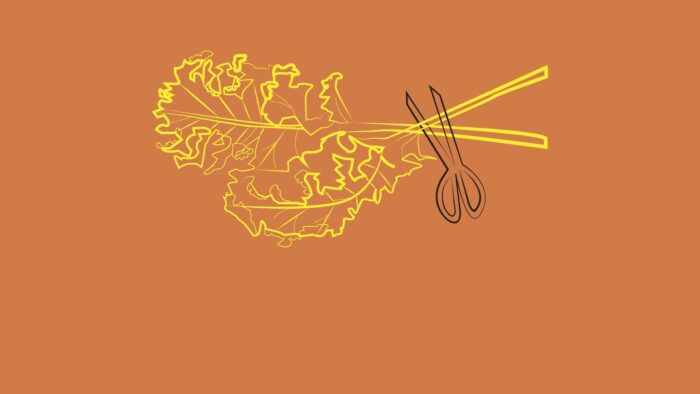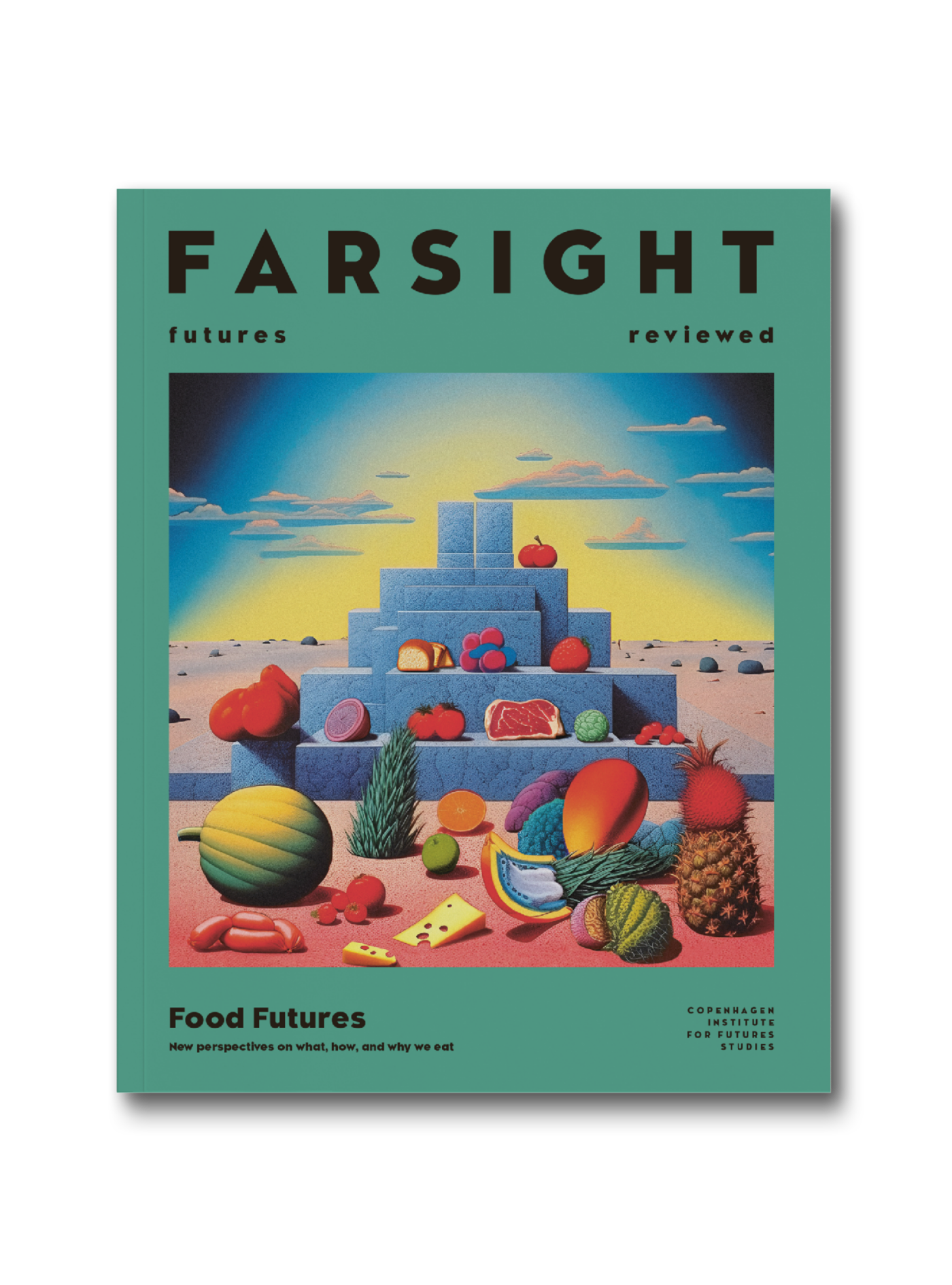
In turn, we use cookies to measure and obtain statistical data about the navigation of the users. You can configure and accept the use of the cookies, and modify your consent options, at any time.
Farming Without Farmland
Can we move from desolation to cultivation?
Image: Midjourney AI
Not all land is created equal. The luscious hills of pasture, suitable for grazing cattle or sheep, will always be a hopeless terrain for the systematised precision required of crops. Agriculture does not follow shifting political lines either: the phosphorous and ammonia-rich plains of ‘black soil’ that stretch across the Eurasian Steppe are marked by centuries of conflict, and in turn, several episodes of famine. That today, a war located on the eastern frontiers of Europe can be said to threaten the continent’s breadbasket shows just how dependent much of our food supply is on a handful of highly fertile land areas.
And these areas are narrowing, too. The global population is expected to grow by almost two billion by 2100, yet global farmland has been shrinking since the turn of the millennium. Less land is used as pasture for animals like cattle and sheep because grazing has been largely replaced by intensive farming methods where cattle are fed grain and soy instead. So while pasture has declined, cropland has grown – half of which is used for growing animal feed today. A side-effect of this is reduced biodiversity, which tends to be in a better state on grazing lands than on intensive croplands.
The intensive farming that has allowed global food production to grow by more than half this century isn’t sustainable, with the Food and Agriculture Organisation of the UN (FAO) warning that current agricultural systems are at a breaking point. Over 90% of the Earth’s topsoil is likely to be at risk from soil erosion, pollution, and salinisation, not to mention climate change-related desertification, flooding, and pest dispersal by 2050. Cutting down forests to make room for more farmland severely impacts the planet’s climate and biodiversity, so we may be forced to introduce farming in places that we don’t generally see as suitable for growing food, such as cities, oceans, polar regions and even outer space.

Broaden your horizons with a Futures Membership. Stay updated on key trends and developments through receiving quarterly issues of FARSIGHT, live Futures Seminars with futurists, training, and discounts on our courses.
become a futures memberUrban farming has been around for a while – though not in a great scale. By and large, it exists at the level of restaurants growing their herbs and greens in rooftop gardens and the occasional hydroponic miniature farm in a converted container. However, urban farming can also be done at larger scales too: the densely populated island state of Singapore aims to grow 30% of its food needs by 2030, largely through multi-story indoor ‘vertical farms’. These high-tech compounds can multiply the amount of food grown per hectare by using LED lighting and artificial heating in lieu of sunlight which ensures a stable year-round climate. Vertical farms are expensive to establish and have greater energy needs than traditional farms, but in turn have lower water needs. Additionally, their food miles (the distance food travels from farm to consumer) are all but eliminated, and their closed environments remove the need for pesticides and herbicides, preventing fertiliser runoff.
70% of our planet’s surface consists of ocean, but apart from coastal fish farms, almost all farming is done on land. When it comes to harvesting food from the sea, we are pretty much at the hunter-gatherer stage. This may be about to change. A growing trend is regenerative ocean farming (also known as restorative aquaculture) where seaweed and shellfish are grown together. A single platform of 35 square metres can produce up to a ton of mussels every year with no freshwater, land or feed required, and the platforms also create habitats for other species that help improve water quality. So far, regenerative ocean farming is only done at small scales in coastal areas, in part because harvesting becomes more difficult and costly the further an ocean farm is from the shore. At a larger scale however, ocean farming can not only feed more people in a sustainable way – it could also benefit the climate by absorbing carbon dioxide from the sea.
Deserts cover about one-third of global land surface and are generally not considered suitable for farming because of their extreme heat, aridity, and lack of fertile topsoil. Yet, 400 million people worldwide live in deserts that typically receive under 100mm of yearly rainfall, and for many of the people living there, desert farming is their only source of food production. For this reason, many innovative technologies are now tested in desert environments, including net houses, hydroponics, drip irrigation systems, and desalination technologies. These have been shown to enable the expansion of agriculture to marginal and degraded desert lands previously considered unfit for food production. Turning deserts into farmland could, at least in part, help offset the forecasted loss of farmland towards 2050. But even with new technology, desert farming remains vulnerable and must be constantly overseen.
Going from extreme heat to extreme cold, farming could also expand into arctic zones. Plant life within these regions is sparse due to extreme weather, limited sunlight, and short growing seasons. But greenhouses can be used to increase and retain heat, allowing the growth of kale, spinach, tomatoes, potatoes, and other stable crops, often using hydroponics whereby crops are grown using a water-based nutrient solution rather than soil. The melting of permafrost induced by climate change is estimated to make 2 million square miles of Siberia – more than half the total farmland in the United States – available for farming by 2080, although the soil quality may not be the best. It should be added that the southern boundary for growing all sorts of crops will also move north, and many farmers will be forced to replace crops with hardier ones that may not produce as much yield, while others may have to abandon farming altogether as drought or flooding makes agriculture untenable.
Food can even be grown in reworked shipping containers in Antarctica, where outside temperatures during winter can reach -75°C. This is being tested by the German Aerospace Centre with the goal of creating ways to farm food on the International Space Station, the Moon, and Mars. Because ultimately, we will have to farm in outer space; not to feed the billions on Earth, but rather the growing extra-terrestrial population.
Shooting food into space with rockets is costly. The current cost of sending payloads into low-Earth orbit range from USD 2,500 to USD 20,000 per kg, and sending food to the Moon or Mars will be far more costly. The farther we stray from our home planet, the more resources we can save if food is farmed locally rather than being imported from Earth. Besides providing food, farming also helps recycle the air by turning carbon dioxide into oxygen and biomass.
Farming mainly requires three things – water, air, and soil. Water may be the easiest requirement to satisfy. Frozen water has been discovered in deep, permanently dark craters at the Moon’s south pole, where NASA plans to build its Artemis Base Camp. More than 5 million cubic kilometres of ice have been identified at or near the surface of Mars. The International Space Station recycles most of its water, but future space habitats farther from the Earth could feasibly mine water from asteroids, too.
There isn’t a lot of air in space or on the surfaces of the Moon and Mars. But that’s no reason to give up. There’s plenty of oxygen bound in minerals in the regolith covering the Moon. Extracting this oxygen will require quite a lot of energy, but as by-products, the process will provide useful metals like aluminium, iron, and magnesium as well as silicon for solar panels. The atmosphere on Mars is only 1% as thick as Earth’s and almost all carbon dioxide, with only 0.16% oxygen, but since plants thrive on carbon dioxide, growing in pressurised Mars air is no problem for them. The sunlight on Mars is only 43% as strong as on Earth, but this could be compensated by solar-powered LED lighting. With no clouds on Mars and only occasional thin sandstorms, solar power is well suited as a power source there.

Explore the world of tomorrow with handpicked articles by signing up to our monthly newsletter.
sign up hereThere is soil on the Moon and Mars, but it’s sorely lacking in nutrients and has a very different composition from the topsoil we know on Earth. Experiments with growing plants in lunar soil brought back by Apollo missions and in simulated Mars soil have shown that plants can grow there, although not as well as in common Earth soil. Additionally, Mars soil contains harmful chemical compounds that must be washed out before crops can be safely grown. Add to this that empty space and the surfaces of the Moon and Mars receive far more hard radiation than the surface of Earth, and without shielding, this radiation is likely to prove harmful to crops. No experiments have yet tried to raise farm animals in space, but experiments with mice have shown that microgravity has detrimental effects on embryo development. However, the biggest barrier for space farming may be the vulnerability of artificial ecosystems. Even the complex ecosystems on Earth are vulnerable to disease and escalating imbalances in unpredictable ways, as shown by the Biosphere experiments of the 1990s. Simpler ecosystems in conditions alien to plants and animals evolved on Earth are bound to be significantly more vulnerable – and if the farms of a Mars colony fail, any help is very far away. Still, if we are desperate enough to want to colonise the harsh environments beyond Earth, space farming will be a vital ingredient, and with experience, the food produced in outer space may become just as good as the food grown here on Earth.
Although farming in the future won’t necessarily be exclusive to regions with fertile soils and sweeping plains, using technology to expand our definition of farmland will nonetheless partly be shaped by nature’s boundaries. For now, ocean farming is restricted to coasts; growing food in deserts remains highly vulnerable in the face of climate change; and farming in outer space requires an entirely novel understanding of how ecosystems work beyond the atmospheric conditions of Earth. But perhaps by combining human ingenuity alongside a respect for nature’s laws, we can finally establish a food system that can both feed the world of tomorrow, and protect it as well.

This is an article from our latest issue of FARSIGHT: Food Futures
Grab a copy here